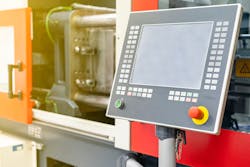Integration of HMI with PC and PLC environments gets tighter
Keith Hogan is principal platform lead at Rockwell Automation.
Tell us about your company’s state-of-the-art operator-interface technology for manufacturing.
Also read: Membrane puts the human in HMI
It can be deployed on industrial PCs or, starting in 2023, on a new set of OptixPanel HMI terminals. FactoryTalk Optix is an addition to our visualization-platform set and does not replace any existing Rockwell Automation product. It’s a great option for new applications requiring greater flexibility.
What have been the biggest improvements to operator-interface technology in the past five years?
Keith Hogan, principal platform lead, Rockwell Automation: There are several, but one of the biggest is the melding of the hardware-based HMI terminal space with the open PC space. Customers can now get a PC-like user experience on a hardware terminal at a lower price point and simpler device management. For example, users can leverage domain-based security rather than isolated security on a single HMI terminal.
Also read: The changing face of operator interface
Another is tight integration between the real-time programmable-logic-controller (PLC) environment and the HMI environment, which enables users to implement functions where they make the most sense. For example, implementing alarming in the controller, as opposed to the HMI system, saves time and enables better alarm management.
Lastly, content management and presentation to operators on thin-client hardware has also revolutionized maintenance, created a more secure environment and reduced downtime. Content such as HMI, computerized maintenance management system (CMMS), video feeds or controller programming software is hosted on a centralized server rather than a PC on the plant floor. In the event of thin-client failure, the device is easily replaced and content delivered almost immediately, drastically reducing time spent installing and configuring software on a PC.
Also read: HMIs create a window of opportunity
About the Author
Mike Bacidore
Editor in Chief
Mike Bacidore is chief editor of Control Design and has been an integral part of the Endeavor Business Media editorial team since 2007. Previously, he was editorial director at Hughes Communications and a portfolio manager of the human resources and labor law areas at Wolters Kluwer. Bacidore holds a BA from the University of Illinois and an MBA from Lake Forest Graduate School of Management. He is an award-winning columnist, earning multiple regional and national awards from the American Society of Business Publication Editors. He may be reached at [email protected]

Leaders relevant to this article:


